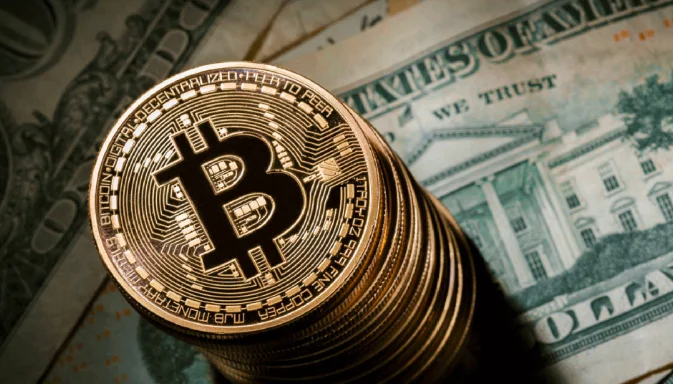Introduction
USDTCCK is a stablecoin designed to keep a steady value, generally tied to the US Dollar, which appeals to users who prefer minimized risk compared to volatile cryptocurrencies. Stablecoins like it provide a bridge between the digital and traditional financial worlds, offering fast, secure, and cost-effective transactions with a predictable value.
Key Features
- Fiat-backed Stability: Pegged to the USD, maintaining a 1:1 value ratio.
- Blockchain Verification: All transactions recorded on a decentralized blockchain, ensuring transparency.
- Global Reach: Accessible worldwide, bypassing traditional financial barriers.
- Low Transaction Fees: Competitive rates make it suitable for cross-border payments.
- User-Friendly: Ideal for beginners due to its low-risk, stable nature.
How USDTCCK Works: An Overview
It operates by holding fiat reserves equal to the circulating token supply, ensuring each token remains pegged to a fiat equivalent. Here’s a simplified view of how it functions:
- Pegging Mechanism: Maintains stability by being tied to fiat assets.
- Transparency Protocol: Transactions are public, allowing users to track and verify.
- Asset Reserves: Reserves ensure each token has an equivalent fiat value.
- Cross-Platform Compatibility: Works across various blockchain ecosystems.
- Efficient Transfers: Quick transactions allow for instant remittances.
Expanded Use Cases
It has a range of practical applications across sectors:
- E-commerce: An increasing number of online retailers accept stablecoins like USDTCCK as payment.
- Cross-border Payments: Low fees make it cost-effective for global remittances.
- Asset Tokenization: Physical assets, including real estate, can be tokenized using it, enabling fractional ownership.
- Liquidity in DeFi: Used extensively in decentralized finance for lending, borrowing, and earning yield.
- International Trade: Provides a consistent value in transactions, reducing currency conversion costs for exporters and importers.
In-depth Comparison: USDTCCK and Major Cryptocurrencies
The table below compares USDTCCK with other well-known cryptocurrencies, including Bitcoin (BTC) and Ethereum (ETH), highlighting key areas where it provides distinct benefits.
| Feature | USDTCCK | Bitcoin (BTC) | Ethereum (ETH) |
| Price Stability | Pegged to USD (1:1) | High volatility | Moderate volatility |
| Transaction Speed | Near-instant | 10-20 minutes | Fast, especially on Layer 2 |
| Primary Use Case | Remittance, trading, e-commerce | Store of value | Smart contracts, DeFi |
| Transaction Fees | Low | High | Varies, can be high |
| Energy Consumption | Low | High (Proof of Work) | Moderate (Proof of Stake) |
| Regulatory Risks | Moderate | High | Moderate to High |
| Security | High | Very high | High |
| Conversion Options | Easy to convert to fiat | Limited direct options | Often requires stablecoins for ease |
Step-by-Step Guide to Using
- Set Up a Wallet: Choose a digital wallet that supports it.
- Purchase USDTCCK: Acquire tokens through exchanges that list USDTCCK.
- Making Payments: Use your wallet to send or receive it, ideal for purchases or transfers.
- Conversion: Exchange USDTCCK back to fiat or other digital assets through compatible platforms.
- Track Transactions: Use a blockchain explorer to monitor transactions for additional security.
Potential Benefits of USDTCCK in Financial Sectors
It offers multiple advantages across different financial sectors:
- Remittances: Fast, affordable cross-border transfers without the need for intermediaries.
- Investment Portfolios: Adds a stable component, allowing investors to hedge against volatility.
- Business Payments: Enables quick B2B transactions, particularly for international vendors.
- Tokenized Real Estate: Allows for fractional property ownership, making real estate more accessible.
- Decentralized Applications (DApps): Used as a stable medium in DeFi applications.
Additional Risks and Considerations
While it provides multiple advantages, there are inherent risks associated with its use:
- Regulatory Scrutiny: Stablecoins face increasing attention from governments, which could lead to tighter regulations.
- Cybersecurity Concerns: Like other digital assets, USDTCCK is susceptible to hacking attempts.
- Liquidity Risks: Stability relies on adequate reserves; lack of transparency could affect liquidity.
- Centralized Control: Since USDTCCK is pegged and controlled by issuers, it may be influenced by their policies, unlike decentralized assets.
Future Trends and the Role of USDTCCK
As blockchain technology continues to evolve, stablecoins like USDTCCK are likely to play a crucial role. Here are some potential trends:
- Increased Adoption in E-commerce: More online and offline merchants may accept USDTCCK, promoting wider use.
- Enhanced Transparency: Potential for regular audits and clear documentation to build user trust.
- Cross-Platform Integration: Broader integration with other financial services and apps could enhance functionality.
- Improved Security Measures: Ongoing development in blockchain security will likely strengthen protection against cyber threats.
- Regulatory Developments: Clearer regulations will help USDTCCK gain mainstream acceptance.
Conclusion
It is more than just a stablecoin; it’s a bridge between traditional finance and the blockchain world, offering secure, cost-effective, and accessible solutions for both individuals and businesses. With its fiat-pegged stability, USDTCCK enables cross-border payments, investment opportunities, and more secure digital transactions. As blockchain technology matures, USDTCCK is positioned to become a mainstay in digital finance, especially with the potential for greater regulatory support and improved security.
Whether you are new to cryptocurrency or looking for a stable digital asset for business or investment, USDTCCK provides a reliable, user-friendly option.
FAQs
What is USDTCCK, and how does it work?
It is a stablecoin pegged to the US Dollar, designed to maintain a 1:1 value ratio with USD. This stability makes it ideal for trading, remittances, and protecting against the volatility common in cryptocurrency markets. It operates on blockchain technology, where transactions are recorded transparently and are accessible through blockchain explorers.
How can I purchase USDTCCK?
You can acquire USDTCCK through various cryptocurrency exchanges that support it. To start, set up a digital wallet, register on an exchange, and purchase USDTCCK using fiat currency or other cryptocurrencies. Once purchased, you can store it in your wallet for transactions or hold it as an investment.
Is USDTCCK safe for everyday transactions?
Yes, it is considered safe for daily use as it’s a stablecoin pegged to fiat currency, offering minimal volatility. Security is further enhanced by the blockchain, where all transactions are recorded transparently. However, users should remain cautious of cybersecurity practices, such as securing their wallets with strong passwords and two-factor authentication.
How is USDTCCK different from other cryptocurrencies like Bitcoin?
Unlike Bitcoin, which is highly volatile and functions primarily as a store of value, USDTCCK is a stablecoin pegged to the US Dollar, offering price stability. While Bitcoin’s value fluctuates based on market conditions, USDTCCK maintains a stable value, making it suitable for regular transactions, remittances, and hedging against volatility.
What are the primary use cases of USDTCCK?
It has a variety of uses, including:
- Remittances: Low-cost and quick cross-border payments.
- E-commerce: Accepted by some online merchants.
- DeFi: Used in decentralized finance for lending, borrowing, and yield generation.
- International Trade: Convenient for businesses conducting cross-border transactions without currency exchange fees.
Are there any risks associated with using USDTCCK?
Yes, while it offers stability, it does come with some risks, including regulatory scrutiny, potential liquidity issues if fiat reserves are not transparent, and cybersecurity concerns. As with any digital asset, it’s important to stay informed about potential regulatory changes and take appropriate security measures.






